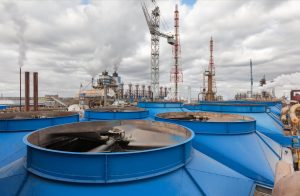The oil and gas industry once saw the digital transformation as daunting. But legacy systems and manual processes are finally giving way to innovation. But in recent years, pressure from volatile markets, environmental regulations, and the push for operational efficiency has forced the industry to rethink its approach. Digital technologies are not just a competitive edge- they’re essential. At the heart of this shift is a new wave of tech talent driving innovation, streamlining operations, and transforming how oil and gas companies operate from the ground up.
The Forces Fueling Digital Transformation
Several powerful forces are accelerating digital transformation across the oil and gas sector. From fluctuating oil prices to global supply chain disruptions, market volatility has made adaptability a business necessity. At the same time, rising pressure to meet ESG (Environmental, Social, and Governance) standards and ambitious decarbonization targets has pushed companies to adopt cleaner, more innovative technologies.
Internally, the need to boost operational efficiency and reduce risk has never been more urgent. This prompts the integration of automation, remote monitoring, and AI-driven systems. With decision-makers demanding real-time data and predictive insights, digital tools are no longer optional—they’re foundational to staying competitive and resilient in today’s fast-evolving energy landscape.
Key Technologies Shaping the Sector
The oil and gas industry is transforming significantly, fueled by emerging technologies enhancing operational efficiency, safety, and decision-making. These innovations optimize traditional processes and create new opportunities for growth and resilience in a rapidly evolving landscape.
- Artificial Intelligence (AI) and Machine Learning: Enable predictive maintenance and drilling optimization by anticipating equipment failures and improving resource extraction with greater precision.
- IoT and Smart Sensors: Allow real-time monitoring of pipelines, machinery, and environmental conditions- minimizing downtime and enhancing safety.
- Cloud Computing and Edge Devices: These technologies streamline the capture and processing of field data, making valuable insights instantly accessible across teams.
- Digital Twins: Provide virtual replicas of physical assets, enabling simulation, testing, and operations optimization in controlled environments.
- Cybersecurity grows increasingly crucial as connectivity expands, protecting critical infrastructure from evolving digital threats.
Why Tech Talent is Mission-Critical
Tech talent has become mission-critical in the oil and gas industry. Companies face a growing shortage of skilled digital professionals capable of navigating the sector’s digital transformation. The industry increasingly relies on hybrid roles, such as engineers who can code and data scientists with deep domain expertise. They bridge the gap between traditional operations and advanced technologies. Software developers, UX designers, and data engineers are redefining upstream, midstream, and downstream operations by building intuitive tools, optimizing workflows, and enabling data-driven decision-making.

To keep pace, many organizations invest in internal innovation teams. They are also partnering with startups and tech firms to accelerate progress, stay agile, and harness cutting-edge solutions. This convergence of industry expertise and digital innovation is shaping the future of oil and gas.
Challenges in Attracting and Retaining Tech Talent
Attracting and retaining top tech talent remains a significant challenge for the oil and gas industry. It competes with Big Tech companies and fast-moving startups that often offer more flexible, innovation-driven environments. One of the biggest hurdles is bridging the cultural gap between traditional O&G operations and the expectations of modern tech professionals, who often prioritize collaboration, agility, and purpose-driven work.
To overcome this, companies are adopting new strategies. They offer remote and hybrid work options, investing in cross-training and reskilling programs for existing employees, and establishing dedicated innovation hubs that foster experimentation and attract forward-thinking talent. These efforts are essential for building a future-ready workforce to drive digital transformation across the sector.
The Future Outlook
The future of oil and gas will be defined by how effectively the industry leverages technology. This will drive decarbonization and build more sustainable operations. As environmental pressures and regulatory demands increase, digital innovation will play a central role- from autonomous rigs that reduce human risk and operational emissions to fully digitized supply chains that maximize efficiency and transparency. AI-led decision-making will become standard, enabling faster, more accurate responses to dynamic market and environmental conditions.
In this landscape, the ability to attract, retain, and nurture top tech talent will be a key differentiator. Companies that invest in digital capabilities and cultivate a culture of innovation will be best positioned to lead the energy transition and thrive in a rapidly evolving global market.
The oil and gas industry’s embrace of digital transformation is necessary and urgent, driven by greater efficiency, sustainability, and resilience. Integrating emerging technologies and a strategic focus on attracting and nurturing top tech talent will be the key to navigating the sector’s future and maintaining a competitive edge.
Read More About:
Identifying Cultural Fit: Balancing Skills, Values, and Team Dynamics in Hiring
The Future of Work: Trends in Company Hiring Practices
